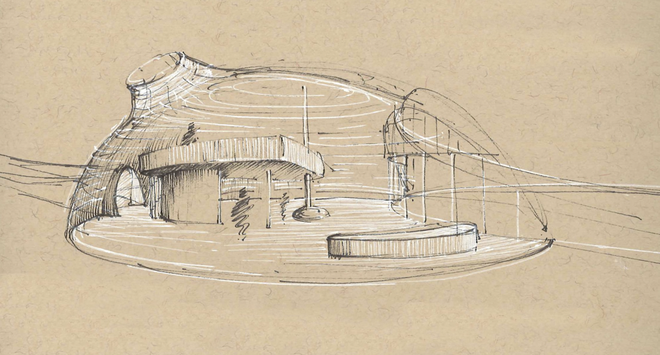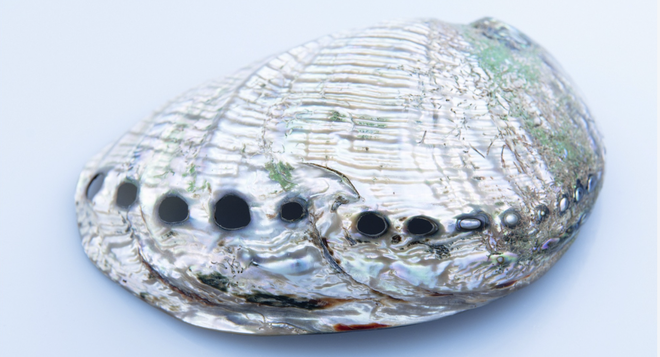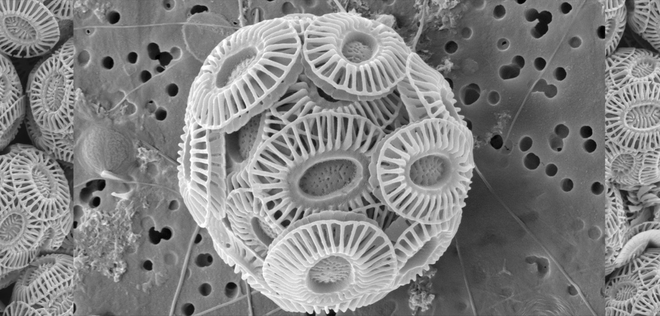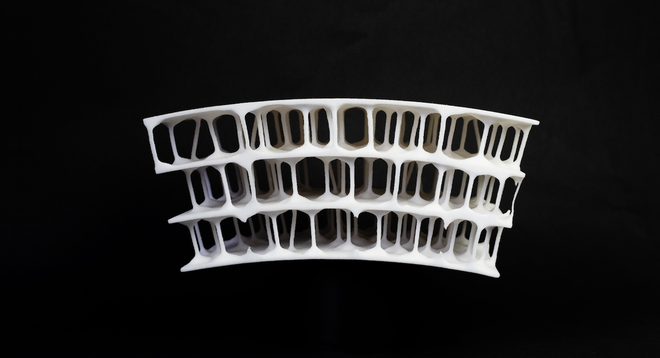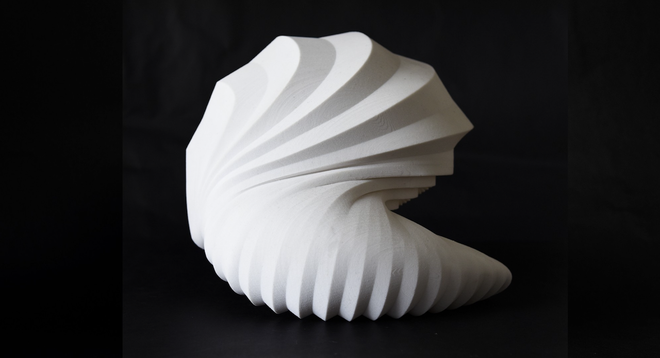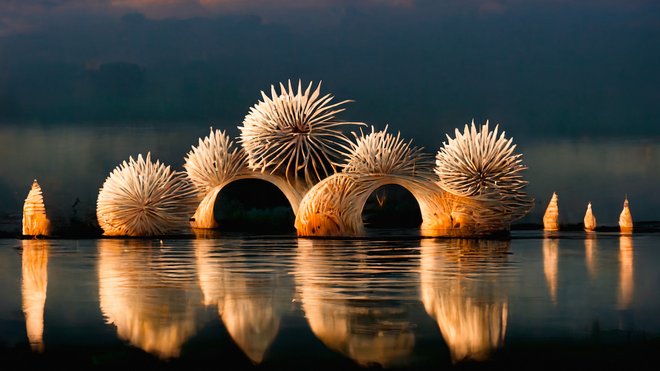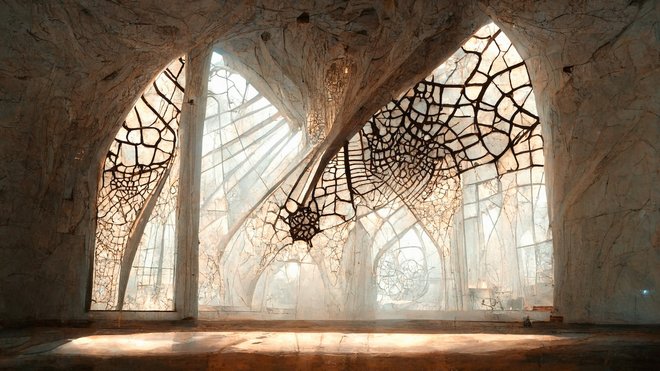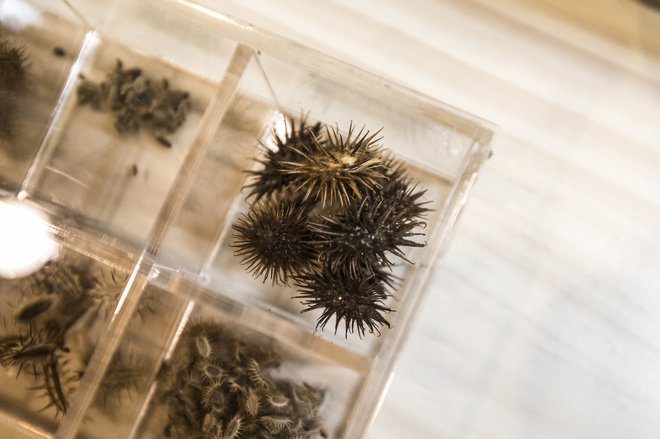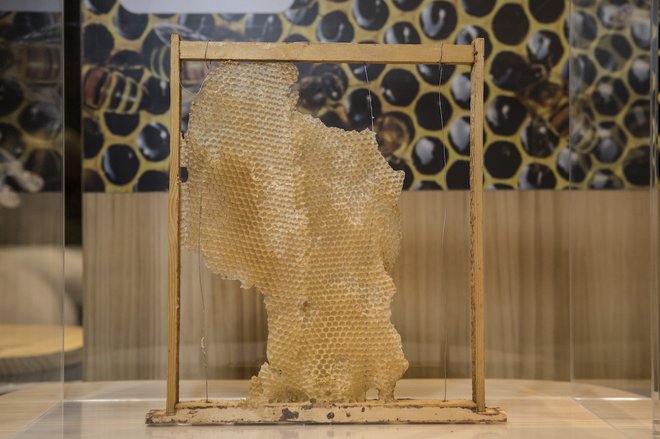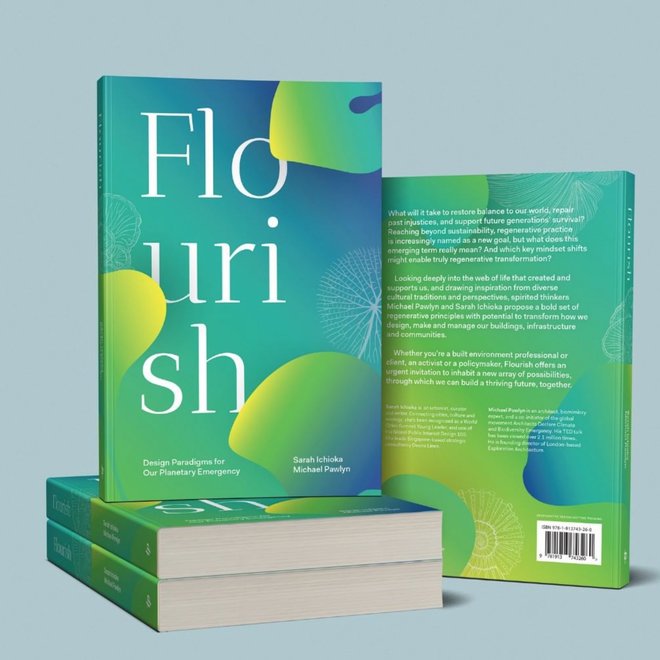Architecture in the rhythm of nature
Skyscrapers as a fetish for height, monuments as demonstrations of power, wasteful battles over materials, climate-hostile construction, and a false sense of entitlement: architecture has become skewed in many areas. Michael Pawlyn wants to straighten it out. The pioneer of biomimetic design shows us design possibilities from nature that shift the focus away from humans and toward the entire web of life. An inspiring conversation with a view that no skyscraper in the world can offer.
Eva Holzinger: How much time do you spend in nature?
Michael Pawlyn: I'm fortunate to live close to one of the largest green spaces in London. I walk the dog there for at least an hour every day. I am currently walking the entire length of the Thames in stages with my partner Kelly Hill. Even on vacation I look for inspiring ecosystems that are close to their original state. Wistman's wood in the South west of England would be a good example.
What was the first lesson you learned from nature?
The sense of absolute beauty, when I was snorkeling in a coral reef for the first time as a young teenager. I was immersed in an almost otherworldly atmosphere, in a completely new soundscape. Everything moved much more slowly, the intensity of the colors was new to me. A phenomenal world of beauty that we need to pay much more attention to.
Design inspired by nature - a research approach known as bionics or biomimicry - has been around since ancient times, made famous by architects such as Antoni Gaudí. In 2007, Pawlyn founded the architecture firm Exploration Architecture to develop works that use biomimicry as a guiding principle, merging his three lifelong passions: biology, design and the environment.
What makes a design beautiful?
I think there is a strong connection between beauty and meaning. Biological structures give a sense of clarity, and that's beautiful to me. When I look at a tree I get a sense of how it collects light, how it exchanges carbon dioxide and oxygen and how it resists wind forces. In my company Exploration Architecture we research biological growth patterns. It's about striving for resource efficiency on the one hand, and capturing that sense of beauty and meaning on the other. We want to understand why something is the way it is and how it works - also with buildings.
"I think there is a strong connection between beauty and meaning. Biological structures give a sense of clarity, and that's beautiful to me."
What about your home?
I live in an old historic building. My apartment is currently being renovated and I'm in the process of incorporating many of my work principles: lots of natural light, planting, a good connection between inside and outside, the use of natural materials and the reuse of existing ones, such as old wood.
What do you mean by a good connection between inside and outside?
I'm lucky to have a very nice view. But I don't just mean a visual connection through windows or a terrace. It is also important to appeal to other senses: the sense of hearing, the ability to perceive temperature and humidity, to ventilate at the right moments and to follow nature's cyclical time, in order to be able to connect to the rhythm of nature at home too.
So a good design appeals to all the senses.
Yes, all nine. British author Ken Robinson has the most popular TED Talk of all time, explaining that there aren't only five senses, but nine. In addition to seeing, hearing, smelling, tasting and touching, there is also balance, body awareness, temperature and pain. Supposedly there is another sense that we suppress: Animals have a sensory ability to perceive ground vibrations in time - way earlier than humans! - so they run to higher ground in the event of an earthquake. Humans probably have this ability too, but we have suppressed it by wearing shoes and living in buildings that isolate us from nature. So it's a sense that we've lost through the way we've evolved in urban environments.
If we want to learn from nature, we all have to listen to her carefully. How do we do that?
Through a greater focus on nature in early education, but also through the design of our cities. The group Terrapin Bright Green is working with biophilic design. Alongside bionics, biophilia is a very important design discipline. Bionics is about functional optimization and integrating what we do into the web of life. Biophilia is more of a psychological discipline: how we feel, how we can connect with nature.
*Biomimicry: Refer to biomimicry and bionicstechnological solutions based on design approaches and processes of nature. Cooling without air conditioning as in termites, convertible facade shading systems that use the mechanism of the bird of paradise flower,ultra-light structures inspired by bird skulls or using cues from desert species that can collect water from the air to develop similar building solutions.
*Biophilie: Biophilia means "love of life" or "love of the living". It describes the need to seek connection to nature and other living beings. Biophilic design encourages our innate connection to nature. We love the sound of a stream because it tells us that we have access to fresh water here - water features in private or professional spaces can thus calm us down and promote a good atmosphere.
Speaking of feelings: how does architecture affect our life, our love, our happiness?
There is a direct link between the built environment and our quality of life. The cultural philosopher Charles Eisenstein describes a history of separation, referring to the prevailing idea that we are isolated individuals in a competitive game, a la "survival of the fittest." Our contemporary cities are manifestations of this, most notably the suburban sprawl where few people live in many separate buildings. In our book Flourish, me and my co-author Sarah Ichioka propose a new way of thinking about cities and started with a much more positive view of humanity.
A more positive view of humanity sounds tempting in times like these...
We humans have a remarkable capacity for empathy, we can cooperate well. It has been proven that we are happier and healthier when we live in cohesive communities and in touch with nature. In our book, we call that symbiogenesis. The term was originally coined by biologist Lynn Margulis, who found that organisms that develop in symbiosis form new structures over time. Symbiogenesis understands design as an integrative and co-creative process that can produce new structures and ways of life.
"We humans have a remarkable capacity for empathy, we can cooperate well."
What would a city look like in terms of symbiogenesis?
The journalist George Monbiot once said that we need private sufficiency and public luxury. This means that the private luxuries we have always pursued are self-defeating - for instance, if we all aspired to have our own gym, tennis court and swimming pool, there simply wouldn’t be enough space but we could create these opportunities for everyone as shared amenities. I'm talking about an ecological civilization in a regenerative city that allows for a better quality of life: Cleaner air, healthier food, a better connection with nature
You describe such a city as regenerative. What distinguishes regenerative design from sustainable design?
Sustainability is about mitigating the negative impacts. But at the end of the day, it's not enough to be less bad - we need to strive for positive impacts. Sustainability focuses primarily on people and on a limited number of issues such as carbon. It needs a systemic, holistic approach.The key aspect of regenerative design is using our ecosystem as a model so that we can connect everything together to create connections. I’m inspired by consultants Janine Benyus and Dayna Baumeister of Biomimicry 3.8 who say that when planning a new city, we should first analyze how a pristine ecosystem works in this part of the world: how much carbon does it sequester, how much wildlife does it accommodate, how much oxygen does it produce, how much water does it store, filter or evaporate? These "environmental performance criteria" then set the standards for what should be built so that the city can also be a stable entity within a larger system.
Are there places where something like this already works?
The small town of Kalundborg in Denmark was the first municipality to establish a symbiotic relationship between all of its industries, so that the excess heat, water, waste and other resources that are left over become raw materials for other industries and farms, resulting in a closed cycle. The space between buildings is also important in a regenerative city. The Cheonggyecheon River Rehabilitation Project in South Korea is a good example; a freeway was demolished there, exposing the river below and creating a linear park that is now the green heart of Seoul.
"At the end of the day, it's not enough to be less bad - we need to strive for positive impacts."
Are you optimistic that we will live in such regenerative cities in the future?
It's not enough to be optimistic or pessimistic. Both ways of thinking imply a certain sense of inevitability when it comes to the future. I subscribe to an idea of possibilism that says we must seek to maximise our agency. We have to decide what kind of future we want and then actively create it. We need to think, act and design better for uncertainty based on evidence.
In the book Flourish, Pawlyn, with his co-author Sarah Ichioka, proposes five regenerative design principles.
- A shift toward Possibilism
- Overcoming the dualistic separation of humans and nature
- A return to a cyclical notion of time
- Symbiogenesis.
- The belief that only long-term health of the planet is a good engine to power an economy
How do you design for uncertainty?
There is a strategy called 'tactical urbanism': these are quick, cheap and simple interventions that show what's possible in the longer term. New urban initiatives often take years to implement: Long phases of consultation and planning slow down the pace. Tactical urbanism implements examples quickly so people can see what a change in public space can look like. With the help of colors, furniture or plants one creates temporary scenarios that make possible solutions visible - this is an attempt to involve the community and stimulate discussion. Janette Sadik Khan, a former New York City Department of Transportation commissioner, used this tactic to establish many bike lanes in the city.
"We have to decide what kind of future we want and then actively create it."
Basically, regenerative medicine is about getting our bodies to regrow body parts like a salamander. That would have a huge impact on our life expectancy. Could this also work for buildings? Could houses ever renew themselves, grow, compost themselves?
We're still a long way from that, but there are self-repairing materials and buildings as living structures. For instance, there is a type of concrete called Bioconcrete that contains calcifying bacteria so that, if it cracks, the crack gets filled with calcium carbonate. Dr Thomas Speck and colleagues at the University of Freiburg also developed a biomimetic self-repairing membrane. The development of living architecture is still at an early stage and, in my opinion, the people doing the most interesting work are Baubotanik.
*Baubotanik: To construct "living structures". Buildings are created through the interaction of technical joining and plant growth. For this purpose, living and non-living construction elements are connected with each other in such a way that they become a plant-technical composite structure. Living bridges, which are formed from living plants or parts of plants as supporting elements, and tree houses are examples of Baubotanik.
Some of your projects can be found in the “BioInspiration” exhibition at the Technisches Museum in Vienna, for example the design for a biomimetic office.
For this project we worked together with a biologist Julian Vincent. In the first workshop we broke down important tasks of the office: collecting and distributing light, maintaining temperature, ventilation, fire protection and so on. With the biologist, we looked at more than 100 biological organisms and how they solve these tasks. The main driving force behind the architectural form was natural light.
Why?
Not just for energetic reasons, but because it's also much better for people's health. When connected to the dynamics of changing light quality throughout the day, one speaks of "circadian rhythms". Nature works in daily, monthly, seasonal and yearly cycles due to the movements of the sun and moon. They are visible in our own physiology, for example in the form of menstrual cycles and seasonal behavior. There are ways to recapture this by making much greater use of daylight and connecting better with the landscape. Apparently, the Andaman people can tell the time of day just by looking at what is happening in the forest. In our modern cities we have become very detached from that idea but we could reestablish that connection in the way we incorporate more nature into our built environments.
Back to the biomimetic office. What biological mechanism inspired you?
A rainforest plant called Anthurium warocqueanum. It grows on the ground where it does not receive direct sunlight but only diffused light. However, it has lenses on its leaves that can focus this diffuse light. Some say it's not physically possible, but it is, and this plant is living proof. So the idea is to collect the light on the roof of the office building and bundle it in fiber optic tubes so that it can be directed to where it is needed.
The opposite of nature, if you will, is artificial intelligence. What is your opinion on AI and architecture? Opportunity or Threat?
Used correctly, it can be very useful. Let's imagine a large and complex construction project; each department should be of the right size, receive plenty of natural light, be within a certain distance from a green space and public transport. With a method called "genetic algorithms" one can achieve a very complex optimization. A computer model of the site and its limitations is used. A software then examines thousands of building shapes and tests them against the parameters you specify. From these countless random variations and combinations, it selects a few of the best and multiplies them; through constant repetition, the AI finally achieves a highly optimized version. It's almost like evolution. At the end of the day, however, we humans should decide whether we want to use these results or not. AI should be a tool, not our master.
Thank you for the interview!


